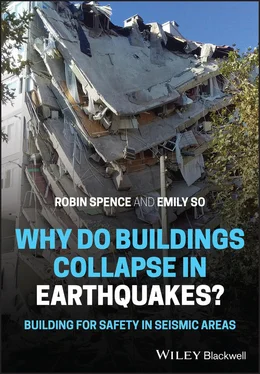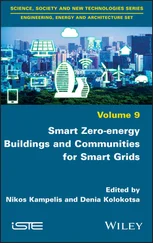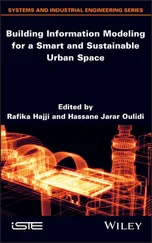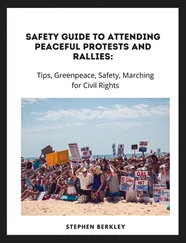138 139
139 140
140 141
141 142
142 143
143 144
144 145
145 146
146 147
147 148
148 149
149 150
150 151
151 152
152 153
153 154
154 155
155 156
156 157
157 158
158 159
159 160
160 161
161 162
162 163
163 164
164 165
165 166
166 167
167 168
168 169
169 170
170 171
171 173
172 174
173 175
174 176
175 177
176 178
177 179
178 180
179 181
180 182
181 183
182 184
183 185
184 186
185 187
186 188
187 189
188 190
189 191
190 192
191 193
192 194
193 195
194 196
195 197
196 198
197 199
198 200
199 201
200 202
201 203
202 204
203 205
204 206
205 207
206 208
207 209
208 210
209 211
210 212
211 213
212 214
213 215
214 216
215 217
216 218
217 219
218 220
219 221
220 222
221 223
222 224
223 225
224 226
225 227
226 228
227 229
228 230
229 231
230 232
231 233
232 234
233 235
234 236
235 237
236 238
237 239
238 240
239 241
240 242
241 243
242 244
243 245
244 246
245 247
246 248
247 249
248 250
249 251
250 252
251 253
252 254
253 255
254 256
255 257
256 258
257 259
258 260
259 261
260 262
261 263
262 264
263 265
264 266
265 267
266 268
267 269
268 270
269 271
270 272
271 273
272 274
273 275
274 276
275 277
276 278
277 279
278 280
279 281
280 282
281 283
282 284
283 285
284 286
285 287
286 288
287 289
Why Do Buildings Collapse in Earthquakes?
Building for Safety in Seismic Areas
Robin Spence
Emeritus Professor of Architectural Engineering and Fellow of Magdalene College, University of Cambridge, United Kingdom
Director, Cambridge Architectural Research Ltd, United Kingdom
Emily So
Reader in Architectural Engineering and Fellow of Magdalene College, University of Cambridge, United Kingdom
Director, Cambridge Architectural Research Ltd, United Kingdom

his edition first published 2021
© 2021 John Wiley & Sons Ltd
All rights reserved. No part of this publication may be reproduced, stored in a retrieval system, or transmitted, in any form or by any means, electronic, mechanical, photocopying, recording or otherwise, except as permitted by law. Advice on how to obtain permission to reuse material from this title is available at http://www.wiley.com/go/permissions.
The right of Robin Spence and Emily So to be identified as the authors of this work has been asserted in accordance with law.
Registered Offices John Wiley & Sons, Inc., 111 River Street, Hoboken, NJ 07030, USA John Wiley & Sons Ltd, The Atrium, Southern Gate, Chichester, West Sussex, PO19 8SQ, UK
Editorial Office 9600 Garsington Road, Oxford, OX4 2DQ, UK
For details of our global editorial offices, customer services, and more information about Wiley products visit us at www.wiley.com.
Wiley also publishes its books in a variety of electronic formats and by print‐on‐demand. Some content that appears in standard print versions of this book may not be available in other formats.
Limit of Liability/Disclaimer of Warranty In view of ongoing research, equipment modifications, changes in governmental regulations, and the constant flow of information relating to the use of experimental reagents, equipment, and devices, the reader is urged to review and evaluate the information provided in the package insert or instructions for each chemical, piece of equipment, reagent, or device for, among other things, any changes in the instructions or indication of usage and for added warnings and precautions. While the publisher and author have used their best efforts in preparing this work, they make no representations or warranties with respect to the accuracy or completeness of the contents of this work and specifically disclaim all warranties, including without limitation any implied warranties of merchantability or fitness fora particular purpose. No warranty may be created or extended by sales representatives, written sales materials or promotional statements for this work. The fact that an organization, website, or product is referred to in this work as a citation and/or potential source of further information does not mean that the publisher and author endorse the information or services the organization, website, or product may provide or recommendations it may make. This work is sold with the understanding that the publisher is not engaged in rendering professional services. The advice and strategies contained herein may not be suitable for your situation. You should consult with a specialist where appropriate. Further, readers should be aware that websites listed in this work may have changed or disappeared between when this work was written and when it is read. Neither the publisher nor author shall be liable for any loss of profit or any other commercial damages, including but not limited to special, incidental, consequential, or other damages.
Library of Congress Cataloging‐in‐Publication data
Names: Spence, R. J. S. (Robin J. S.), author. | So, Emily, (K. M.), author.
Title: Why do buildings collapse in earthquakes? : building for safety in seismic areas / Robin Spence and Emily So.
Description: Hoboken, NJ : Wiley‐Blackwell, 2021.
Identifiers: LCCN 2020053851 (print) | LCCN 2020053852 (ebook) | ISBN 9781119619420 (hardback) | ISBN 9781119619451 (adobe pdf) | ISBN 9781119619468 (epub)
Subjects: LCSH: Buildings–Earthquake effects. | Earthquake resistant design.
Classification: LCC TH1095 .S65 2021 (print) | LCC TH1095 (ebook) | DDC 693.8/52–dc23
LC record available at https://lccn.loc.gov/2020053851LC ebook record available at https://lccn.loc.gov/2020053852
Cover Design: Wiley
Cover Image: © Professor Mauricio Beltran
We have been generously supported in the preparation of this book by many friends and colleagues, who have read and commented on parts of the text, provided suggestions and illustrations and have been a valuable source of ideas and inspiration over many years.
We would like first to thank Yutaka Ohta whose dedication to earthquake risk reduction and foresight has been a constant motivation to us both. We would also like to acknowledge the late Laurie Baker and the late Paul Oliver, whose understanding of vernacular architecture and its value has been an inspiration for us.
In the preparation of this book, we greatly appreciate the comments and advice on particular chapters from Andrew Coburn, Antonios Pomonis, Svetlana Brzev, Edmund Booth, Mary Comerio and Rashmin Gunasekera.
We appreciate also the cooperation of Rajendra and Rupal Desai, Amod Dixit, Lucy Jones Toshitaka Katada, Randolph Langenbach, Tracy Monk and Edward Ng in reviewing our profiles of them and their work.
We thank our colleagues Hannah Baker and Weifeng Victoria Lee for help in the preparation of maps and diagrams used, as well as for reviewing parts of the manuscript, Yue Zhu for her help with preparation of a number of the images used, and Sandra Martinez‐Cuevas for supplying the diagram of fragility curves used in Chapter 5, based on her analysis of the Cambridge Earthquake Impact Database (CEQID).
Читать дальше













